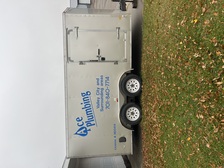
Get matched with top landscapers in Linton, ND
Enter your zip and get matched with up to 5 pros
Need a pro for your landscaping project in Linton, ND?
Verified Reviews for Landscaping pros in Linton, ND
*The Angi rating for Landscaping companies in Linton, ND is a rating based on verified reviews from our community of homeowners who have used these pros to meet their Landscaping needs.
*The HomeAdvisor rating for Landscaping companies in Linton, ND is a rating based on verified reviews from our community of homeowners who have used these pros to meet their Landscaping needs.
Last update on December 15, 2025
Find Landscapers in Linton
concragate llc
concragate llc
All your flatwork needs driveways shop floors garage floors demoloition stamped retaining walls sidewalks and concrete line pumping
All your flatwork needs driveways shop floors garage floors demoloition stamped retaining walls sidewalks and concrete line pumping
Freelanced handymen
Freelanced handymen
We cover roofs down to landscaping and whatever else you may have in between. We have been in the service of home remodels, contractor work for 10+ years and would love to add your project to our list of accomplished jobs. There is no job to small for us.
We cover roofs down to landscaping and whatever else you may have in between. We have been in the service of home remodels, contractor work for 10+ years and would love to add your project to our list of accomplished jobs. There is no job to small for us.
Top Notch Fencing & Services Inc
Top Notch Fencing & Services Inc
We are a local family operated small business that takes great pride in our work.
We are a local family operated small business that takes great pride in our work.
Handymen for hire
Handymen for hire
two employees, free estimates, $100 minimum, do sub-contracting, accept most major credit cards, materials purchased by customer unless otherwise stated,
two employees, free estimates, $100 minimum, do sub-contracting, accept most major credit cards, materials purchased by customer unless otherwise stated,
AAA Landscaping & Tree Service
AAA Landscaping & Tree Service
AAA Landscaping & Tree Service
AAA Landscaping & Tree Service
KM-Mowers and Snow Removal
KM-Mowers and Snow Removal
We have been in business for 3 years with a decade of experience. Great customer service and knowledge to make your yard appealing to all.
We have been in business for 3 years with a decade of experience. Great customer service and knowledge to make your yard appealing to all.
ENG Curbing
ENG Curbing
Based in Dickinson, ND, E N G Curbing is the perfect landscape contractor for your needs. Contact our company at (701) 264-9749!
Based in Dickinson, ND, E N G Curbing is the perfect landscape contractor for your needs. Contact our company at (701) 264-9749!
Drip Drop Sprinkler Services, LLC
Drip Drop Sprinkler Services, LLC
Sub Contracting Work 1/2 payment down prior to starting projects Net 30 days paid in full
Sub Contracting Work 1/2 payment down prior to starting projects Net 30 days paid in full

Legacy Landscaping and Design LLC
Legacy Landscaping and Design LLC
Legacy landscaping is a full service landscape design and installation company. Based out of Bismarck ND. Additional DBA - Legacy Landscaping.
Legacy landscaping is a full service landscape design and installation company. Based out of Bismarck ND. Additional DBA - Legacy Landscaping.
Landscaping Services LLC
Landscaping Services LLC
Landscaper and Nursery
Landscaper and Nursery
FAQs for landscaping projects in Linton, ND
Landscapers typically charge $25 to $50 per person per hour, which equals around $50 to $100 per hour for a two-person crew. These rates can vary depending on your location, the size of staff needed for the job, and overall job type. For example, a larger crew will be needed for structural additions and hardscaping versus planting flowers.
When it comes to landscapers, licensing laws vary. Landscaping architects are required to be licensed in all 50 states, whereas traditional landscaping contractors are not typically required to hold a certification. You’ll likely be working with a landscaping contractor for most residential projects. If you are redesigning your whole yard or adding in hardscape features, you will work with a landscaping architect at some point during the project. Be sure to check our state licensing tool to review the local landscaper guidelines.
As you browse our pro listings, take note of the “Angi Approved” badge. Angi Approved businesses meet our standards for certification which include:
The owner, principal, or relevant manager passed a criminal background check
Required to have applicable state and local licenses
Maintain an average star rating of 3.0 or better on our network, if they have at least one review
Paying to advertise their services
Meeting any other eligibility criteria required by Angi
Keep in mind licensing is different from certifications. A license is a legal requirement to operate a business, while certifications are voluntary.
If you want landscaping done but want to save some money on the overall fees, you can do a few things at every stage. Some ways to save money on your landscaping include:
Repurpose existing features and materials
Softscape instead of hardscape
Choose the more inexpensive materials
DIY when you can
Buy young plants instead of mature ones
If you are an avid DIYer and have plenty of time to dedicate to your yard, doing your own landscaping (or at least some of it) can be an affordable option. Projects like planting a tree, planting grass, laying sod, or building a firepit can realistically be done without the need for a landscaping professional. However, these projects can take considerable time and some landscaping knowledge, so having a pro might save you in the long run.
Projects that are dangerous, like digging with heavy machinery or removing a tree, should always be done by a professional.
Landscaping costs around $3,500 but varies widely from $200 to $14,000. Factors that play a part in your final landscaping price tag include:
Location
Yard size
Project size
Materials
Land preparation
Type of landscaping
Considering so many factors, it’s not surprising that the overall costs can differ. A typical landscaping project is flower bed installation, which averages between $800 and $3,000. However, landscape lighting installation is a higher-end project, with a price tag of $2,000 to $6,000.
The Linton, ND homeowners’ guide to landscaping services
From average costs to expert advice, get all the answers you need to get your job done.
 •
•How much do hedges cost? Discover average hedge installation prices, key cost factors, and tips to save money on your landscaping project.

How much does hardscaping cost project by project? Check out our breakdown for every price tag you need to know, from outdoor fireplaces to patios.
.jpg?impolicy=leadImage)
Landscaping your yard adds curb appeal and expands your home’s living space into the outdoors. Learn how much landscaping costs for various projects.

If you have a hilly property, erosion can threaten your drinking water, soil, and plants. Fortunately, these tips can teach you how to stop erosion on a slope.

Bird poop on outdoor furniture is a common homeowner problem. Use our guide to help you remove these unsightly stains and clean up your property.

Try these 10 backyard improvements to turn your backyard into your own personal oasis.
- Napoleon, ND Landscapers
- Herreid, SD Landscapers
- Wishek, ND Landscapers
- Lincoln, ND Landscapers
- Bismarck, ND Landscapers
- Steele, ND Landscapers
- Mclaughlin, SD Landscapers
- Ashley, ND Landscapers
- Eureka, SD Landscapers
- Mandan, ND Landscapers
- Mobridge, SD Landscapers
- Selby, SD Landscapers
- Bowdle, SD Landscapers
- Center, ND Landscapers
- Wilton, ND Landscapers
- New Salem, ND Landscapers
- Edgeley, ND Landscapers
- Timber Lake, SD Landscapers
- Hoven, SD Landscapers
- Elgin, ND Landscapers
- Washburn, ND Landscapers
- Mina, SD Landscapers
- Ipswich, SD Landscapers
- Jamestown, ND Landscapers
- Leola, SD Landscapers
- Ellendale, ND Landscapers
- Bloom, ND Landscapers
- Glen Ullin, ND Landscapers
- Gettysburg, SD Landscapers
- Turtle Lake, ND Landscapers
- Lawn Care
- Landscaping Hardscaping And Pavers
- Tree Service
- Lawn Irrigation
- Landscaping Lighting
- Fencing
- Patios
- Retaining Wall Installers
- Playground Equipment
- Fountains
- Tennis Court Contractors
- Gazebos
- Drain Pipe Installation
- Outdoor Light Repair
- Plant Nurseries
- Sand Rock Delivery
- Install Above Ground Pools
- Storm Drain Installation
- Pet Fencing
- Weed Services
- Plant Watering
- Repair Sewer Line
- Stone And Gravel
- Gravel Driveway Repair







